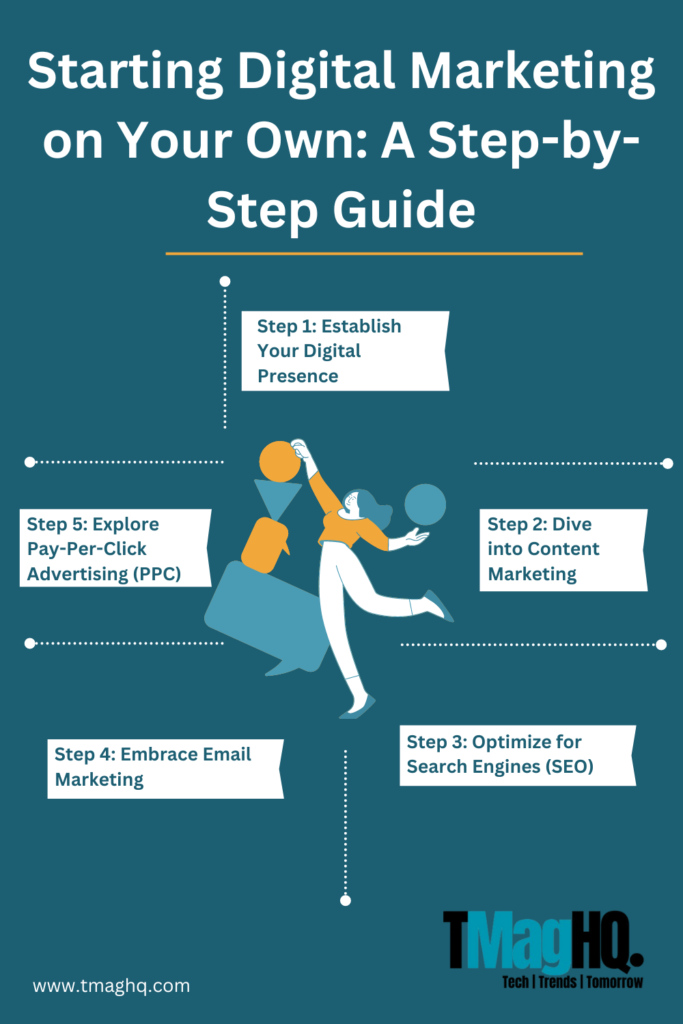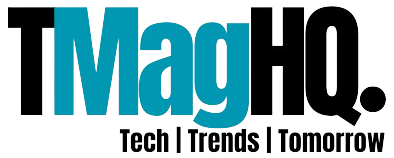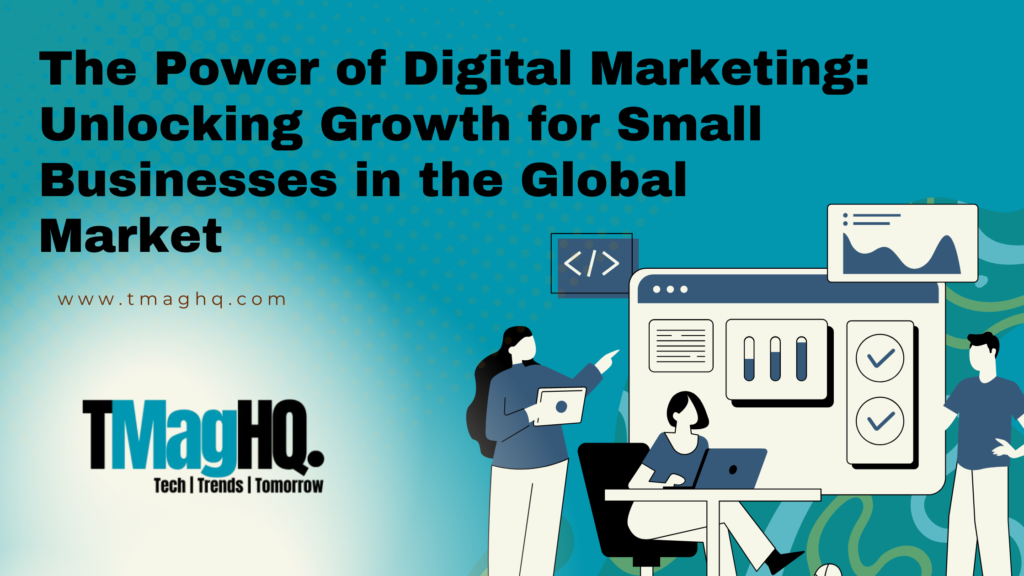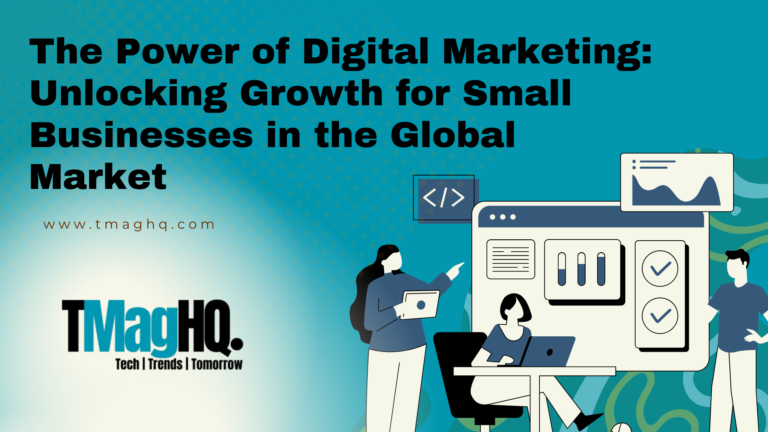The Power of Digital Marketing For Small Businesses in the Global Market
Small businesses play a vital role in driving the global economy. They are the engine of job creation, innovation, and economic resilience. As of the recent data, in the USA alone 33.3 million registered businesses qualify as small businesses, & to your surprise, they account for more than 99% of the business operations in the USA. Also, about 45.9% of the total US workforce is employed by these small businesses. So can you imagine the impact these small businesses have on an economy?
However, operating in today’s fast-paced, ever-evolving market comes with its share of challenges. Limited resources, fierce competition, and the need to keep up with digital trends can make scaling a small business seem like an uphill battle. If you are also an entrepreneur operating a small brand from your garage or looking to set up a new business, then you might need to face these challenges as well.
But here’s the good news: digital marketing for small business offers a pathway to growth that is both effective and affordable. Unlike traditional marketing, which often requires substantial budgets, small business online marketing provides cost-effective tools that empower businesses to reach new customers, enhance brand recognition, and compete on a global scale. These tools enable businesses to overcome the limitations of traditional marketing which mostly is to look for an advertising agency, that can print pamphlets, distribute them, put on hoardings, and manage them on your behalf.
In this blog, we’ll explore how small businesses like you can leverage digital marketing to expand their reach and how they can start implementing these strategies on their own without breaking the bank.
Table of Contents
How Digital Marketing Fuels Business Growth?
Cost-Effectiveness: Making Every Dollar Count
For small businesses, every dollar counts, and nowhere is this more evident than in marketing. Traditional advertising methods like print ads, billboards, or TV commercials can be prohibitively expensive, often putting them out of reach for smaller enterprises.
A study investigating the cost disparity between traditional and online marketing reveals that reaching 1000 individuals through online channels typically incurs expenses ranging from $3 to $10. Conversely, achieving a comparable reach via traditional marketing methods may necessitate significantly higher costs, potentially exceeding $22 or more.
It represents a clear difference and effectiveness of Small business internet marketing that delivers results without draining your budget.
Such is majorly because social media advertising on platforms like Facebook, Instagram, or LinkedIn allows businesses to set their budget and only pay for the results they get, whether it’s clicks, impressions, or conversions. This flexibility ensures that businesses can maximize their return on investment (ROI) without overspending. Additionally, tools like Google Ads provide opportunities to reach targeted audiences based on search behavior, ensuring that your marketing efforts are directed at those most likely to convert into customers.
Targeted Reach: Connecting with Your Ideal Customers
One of the standout benefits of digital marketing is its ability to precisely target your ideal customers. Unlike traditional marketing, where messages are broadcast to a broad audience, small business internet marketing allows businesses to hone in on specific demographics, interests, and behaviors.
Let’s have a look at the data end, till July 2024, there were about 5.45 billion active internet users worldwide, which amounts to 65.1% of the global population. This figure includes millennials and older generations who may not be as comfortable with smartphones. However, the upcoming generation of Gen Z and Gen Alpha are fully immersed in the digital world, which suggests that the number of active internet users could easily surpass 90% in the coming years. This presents a significant opportunity for small businesses like yours to tap into a vast and growing market.
Imagine you’re a local bakery. With digital marketing, you can create ads that specifically target people within a certain radius of your shop who have shown interest in baked goods or cooking. Or, if you’re an online retailer, you can target shoppers based on their previous purchase history or browsing behavior. This level of precision not only improves the effectiveness of your marketing campaigns but also ensures that your marketing budget is spent wisely, reaching those who are most likely to engage with your brand.
Building Brand Awareness: Establishing Your Digital Presence
In today’s digital age, having a strong online presence is essential for any business looking to grow. Small business online marketing helps build brand awareness by making your business visible where your potential customers spend most of their time—online.
Creating a cohesive and professional online presence starts with a well-designed website. Your website acts as the digital storefront of your business, providing customers with essential information about your products, services, and values. It’s important that your website is not only visually appealing but also optimized for user experience and search engines (SEO).
Beyond your website, content marketing plays a critical role in building your brand. Regularly publishing valuable content—whether through blogs, videos, or social media posts—helps establish your business as an authority in your industry. It also keeps your audience engaged and encourages them to interact with your brand on a deeper level. Tools like Canva can help you create stunning visuals, while platforms like Buffer can assist with scheduling and managing your content across various channels.
Starting Digital Marketing on Your Own: A Step-by-Step Guide
Step 1: Establish Your Digital Presence
The first step in your digital marketing journey is to establish a digital presence. This begins with creating a professional, user-friendly website. Platforms like WordPress and Shopify offer templates that make it easy for anyone to build a website, even without technical expertise.
While developing your website keep in mind that it should communicate who you are, what you offer, and why customers should choose you. Don’t forget to optimize it for mobile devices, as more and more consumers are shopping on their phones.
Confused with the technical terms “website development” & “optimization”, don’t worry we also have detailed content available that can help you understand these terms easily.
Next, it’s time to claim your space on social media. Depending on your business and target audience, you may want to focus on platforms like Facebook, Instagram, LinkedIn, or even TikTok. Each platform has its strengths, so choose the ones that align best with your brand and where your audience is most active. Social media is not just about selling—use it to tell your story, share valuable content, and engage with your community.

Step 2: Dive into Content Marketing
Content marketing is a powerful tool for small businesses. It’s not just about creating content; it’s about providing value to your audience and building relationships with them. Start by identifying the topics that matter most to your customers. What questions do they have? What problems are they trying to solve? Use this insight to create content that addresses these needs.
For example, if you run a fitness studio, you might create blog posts about the benefits of different types of exercise, or share workout tips on Instagram. The key is to be consistent and authentic. Over time, your content will help establish you as a trusted resource, attracting more customers to your business.
Step 3: Optimize for Search Engines (SEO)
Search Engine Optimization (SEO) is essential for driving organic traffic to your website. SEO involves optimizing your website’s content and structure so that search engines like Google can easily find and rank your site. Start with keyword research to identify the terms your target audience is searching for. Optimize your website for these keywords, evaluate your competitors, and establish your website authority on search engines.
Next, ensure that your website is user-friendly, with fast loading times and easy navigation. If you’re unsure where to start, there are plenty of online resources and tutorials that can guide you through the basics of SEO.
Step 4: Embrace Email Marketing
Email marketing is one of the most effective ways to maintain a direct line of communication with your customers. Building an email list should be a priority from day one. Offer something of value in exchange for email addresses—this could be a discount code, a free ebook, or exclusive content.
Once you have a list, use email marketing platforms like Mailchimp or Constant Contact to create and send campaigns. Keep your emails personal, relevant, and valuable. Whether you’re announcing a new product, sharing a blog post, or offering a special promotion, email marketing allows you to stay connected with your audience and drive repeat business.
Step 5: Explore Pay-Per-Click Advertising (PPC)
If you’re looking for immediate results, Pay-Per-Click (PPC) advertising might be the way to go. With PPC, you only pay when someone clicks on your ad, making it a cost-effective option for driving targeted traffic to your site. Google Ads and Facebook Ads are two popular platforms that offer robust targeting options.
When setting up your PPC campaign, start with a small budget and focus on high-intent keywords that are directly related to your products or services. Monitor the performance of your ads closely, and don’t be afraid to tweak your strategy based on what’s working and what’s not. Over time, PPC can become a powerful tool in your digital marketing arsenal, driving both traffic and conversions.
Investing Your Savings into Business Growth
Reinvesting in Marketing: Scaling What Works
As your digital marketing efforts start to pay off, it’s important to reinvest those savings back into your business. Look at what’s working—whether it’s a particular social media platform, a content strategy, or an email campaign—and allocate more resources to these areas. Consider expanding your reach by experimenting with new digital channels, such as video marketing or influencer partnerships.
Enhancing Products or Services: Innovation Drives Growth
Another strategic use of your savings is to enhance your products or services. This might involve improving quality, introducing new features, or expanding your product line. Investing in innovation not only keeps your business competitive but also helps you meet the evolving needs of your customers, leading to increased customer satisfaction and loyalty.
Building a Team: Growing Your Capabilities
As your business grows, you may find that managing all aspects of digital marketing on your own becomes overwhelming. Building a team—whether in-house or through outsourcing—can help you scale your marketing efforts more effectively. Bringing in specialists like social media managers, content creators, or SEO experts can elevate your marketing strategy and free up your time to focus on other critical areas of your business.
Expanding into International Markets: Reaching a Global Audience
Finally, as your business becomes more established, consider expanding into international markets. Digital marketing makes it easier than ever to reach a global audience. Platforms like Shopify or Amazon allow you to sell your products worldwide, while digital advertising can target customers in different regions or languages. Expanding internationally requires careful planning and research, but the potential rewards can be significant, opening up new revenue streams and growth opportunities.
Conclusion
In conclusion, digital marketing for small business is a powerful tool that can help you scale your operations and reach a global audience. Whether you’re just starting out or looking to expand, you can also look for affordable small business internet marketing services that offer a variety of cost-effective strategies that can drive growth.
By starting with simple, affordable tactics and gradually reinvesting in what works, you can achieve sustainable success, even with limited resources. The key is to take that first step—whether it’s setting up your website, launching a content marketing campaign, or experimenting with PPC advertising. With consistent effort, a willingness to learn, and a focus on providing value to your customers, digital marketing can transform your small business into a thriving enterprise.
FAQs (Frequently Asked Questions)
How To Do Digital Marketing For Small Business?
Digital marketing for small businesses involves using online channels to reach and engage customers. This includes creating a website, using social media, email marketing, and search engine optimization (SEO). Small businesses can benefit from digital marketing by increasing their online visibility, generating leads, and building brand awareness.
What Is The Digital Marketing Cost For Small Business?
Digital marketing for small businesses involves using online channels to reach and engage customers. This includes creating a website, using social media, email marketing, and search engine optimization (SEO). Small businesses can benefit from digital marketing by increasing their online visibility, generating leads, and building brand awareness.
Why Internet or Digital Marketing Is Important For Small Business?
Digital marketing for small businesses is important because it allows them to compete with larger businesses on a level playing field. It also provides a cost-effective way to reach a large audience and track the results of marketing efforts.




